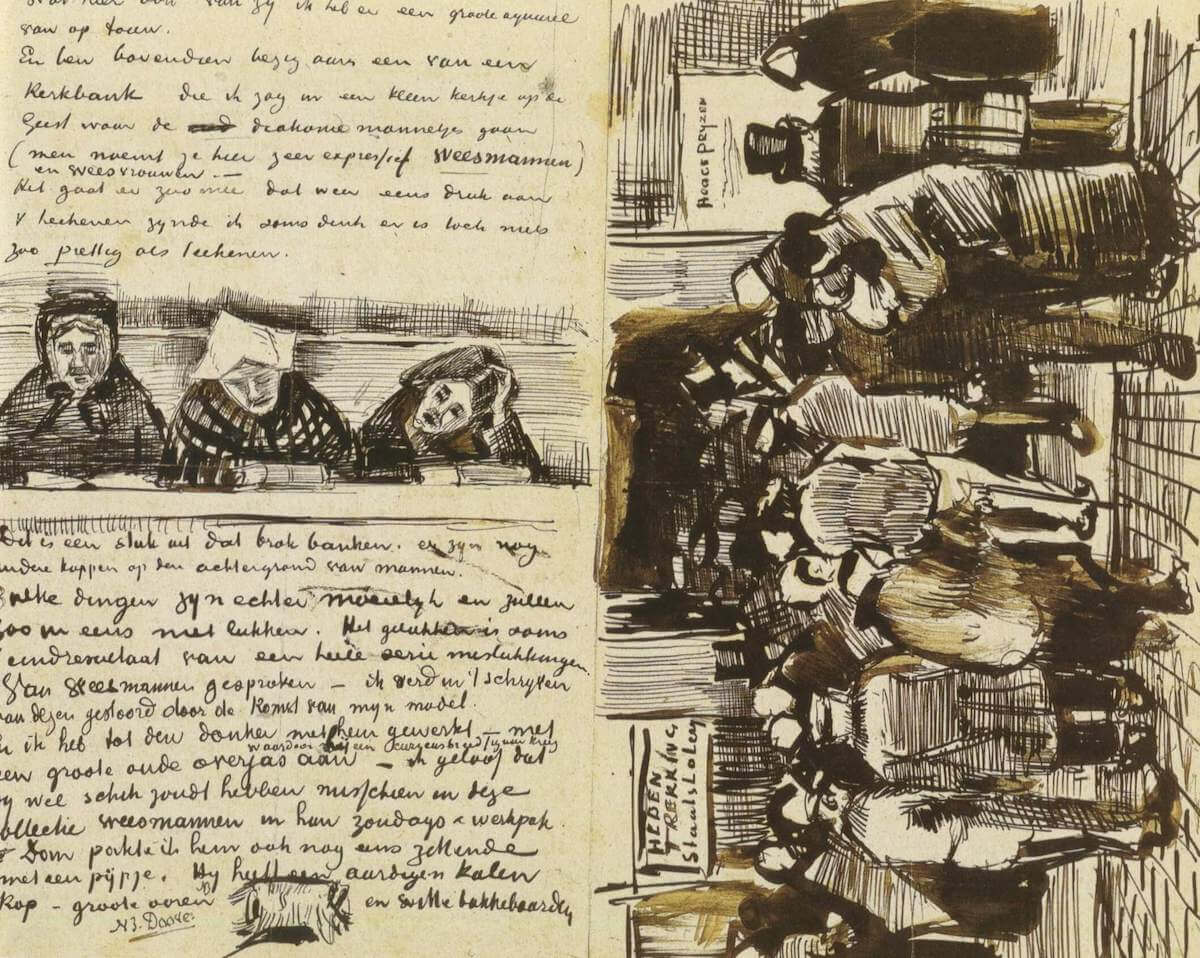Letter 10/01/1882 - by Vincent van Gogh

Do you remember Moorman's National Lottery Office at the beginning of the Spuistraat? I came past it one rainy morning, when people were waiting outside to collect lottery tickets. They were mostly old women and the sort
of people of whom you can't say what they do or how they live, but who obviously have a lot to do and worry about, and who get on with life.
Looking at it superficially, such a group of people, who clearly take a lot of interest in "today's draw," is obviously something you and I would almost laugh at, as the lottery leaves both of us completely cold.
But the little group of people - and their expression of waiting - touched me, and while I drew it, it began to get a greater, deeper meaning for me than at first.
It becomes more meaningful when you see it in terms of the poor and the money. This actually applies to almost all groups of figures. You sometimes have to think it through before you recognize what it means; the
curiosity and illusion about the lottery seems a little childish to us - but it becomes serious when you think that in a revolt against misery and in an effort to forget, the poor souls will buy a lottery ticket, paid
for with money for which they have stinted themselves, which they imagine might possibly rescue them.
Anyhow, I have set up a large watercolor of it. And moreover, I am working on one of a church pew I saw in a small church in the Geest, where the almshouse men go (here they have a very expressive name for them: orphan
men and orphan women).
Once I am busy drawing, I sometimes think that there is nothing as pleasant as drawing.
This is part of those pews - in addition there are men's heads in the background.
It is obvious that in that group of figures, of which I am sending a scribble in black, there were splendid examples of color: blue smocks and brown jackets; white, black, and yellowish workers' trousers; faded shawls; an
overcoat turning a greenish color; white bonnets and black toppers; muddy street cobbles and boots, as a contrast for pale or weather-beaten faces. That is where oil painting or watercolor comes in. Anyhow, I will work on it.




















